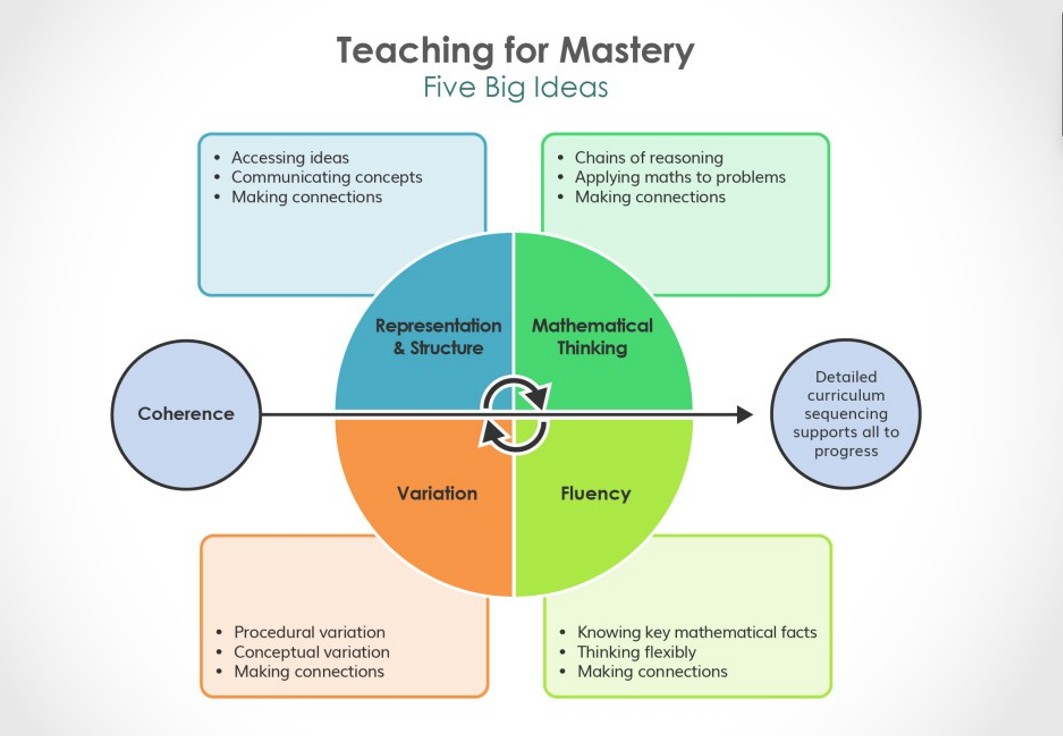Maths
Maths PolicyCalculation Policy
At Berkley we want to foster a positive approach to Maths and an ‘I can’ attitude.
We teach Maths using the Mastery approach, linked to the National curriculum. The mastery approach allows children to gain a deeper understanding of mathematical concepts. We teach by breaking down concepts into smaller steps to enable the scaffolding of children’s learning, allowing them time to secure their understanding and then to apply this knowledge to their first-hand experience through problem-solving activities.
The Five big ideas behind the Berkley Maths Curriculum are:
- Coherence
Teaching is designed to enable a coherent learning progression through the curriculum, providing access for all pupils to develop a deep and connected understanding of mathematics that they can apply and communicate in a range of contexts.
- Representation and Structure
Teachers carefully select representations of mathematics to expose mathematical structure. The intention is to support pupils in ‘seeing’ the mathematics, rather than using the representation as a tool to ‘do’ the mathematics. These representations become mental images that students can use to think about and discuss mathematics, supporting them to achieve a deep understanding of mathematical structures and connections.
- Mathematical Thinking
Mathematical Thinking is central to how pupils learn mathematics and includes looking for patterns and relationships, making connections, conjecturing, reasoning, and generalising. Pupils should actively engage in mathematical thinking in all lessons, discussing and communicating their ideas using precise mathematical language.
- Fluency
Efficient, accurate recall of key number facts and procedures is essential for fluency, freeing pupils’ minds to think deeply about concepts and problems, but fluency demands more than this. It requires pupils to have the flexibility to move between different contexts and representations of mathematics, to recognise relationships and make connections, to explain their ideas and to choose appropriate methods and strategies to solve problems.
- Variation
The purpose of variation is to draw closer attention to a key feature of a mathematical concept or structure through varying some elements while keeping others constant. Through variation the teacher focuses thinking and discussion on the key feature in question.
Conceptual variation involves varying how a concept is represented to draw attention to critical features. Often more than one representation is required to look at the concept from different perspectives and gain comprehensive knowledge.
Procedural variation considers how the student will ‘proceed’ through a learning sequence. Purposeful changes are made in order that pupils’ attention is drawn to key features of the mathematics, scaffolding students’ thinking to enable them to reason logically and make connections.
-
Essential Characteristics of Mathematician
- The ability to embrace the value of learning from mistakes and false starts.
- The ability to reason, generalise and make sense of solutions.
- Fluency in performing written and mental calculations and mathematical techniques.
- A wide range of mathematical vocabulary.
- A commitment to and passion for the subject.
